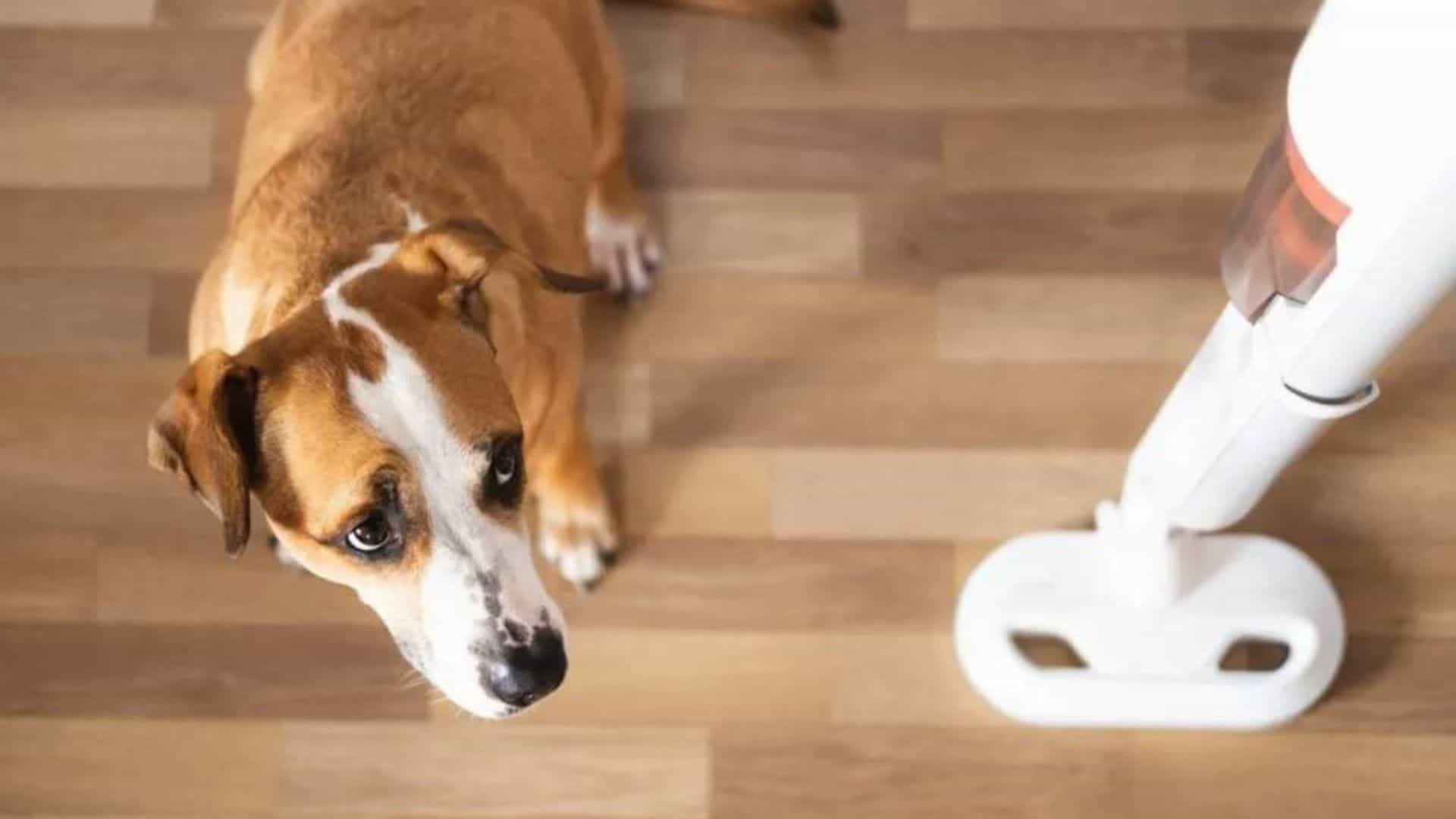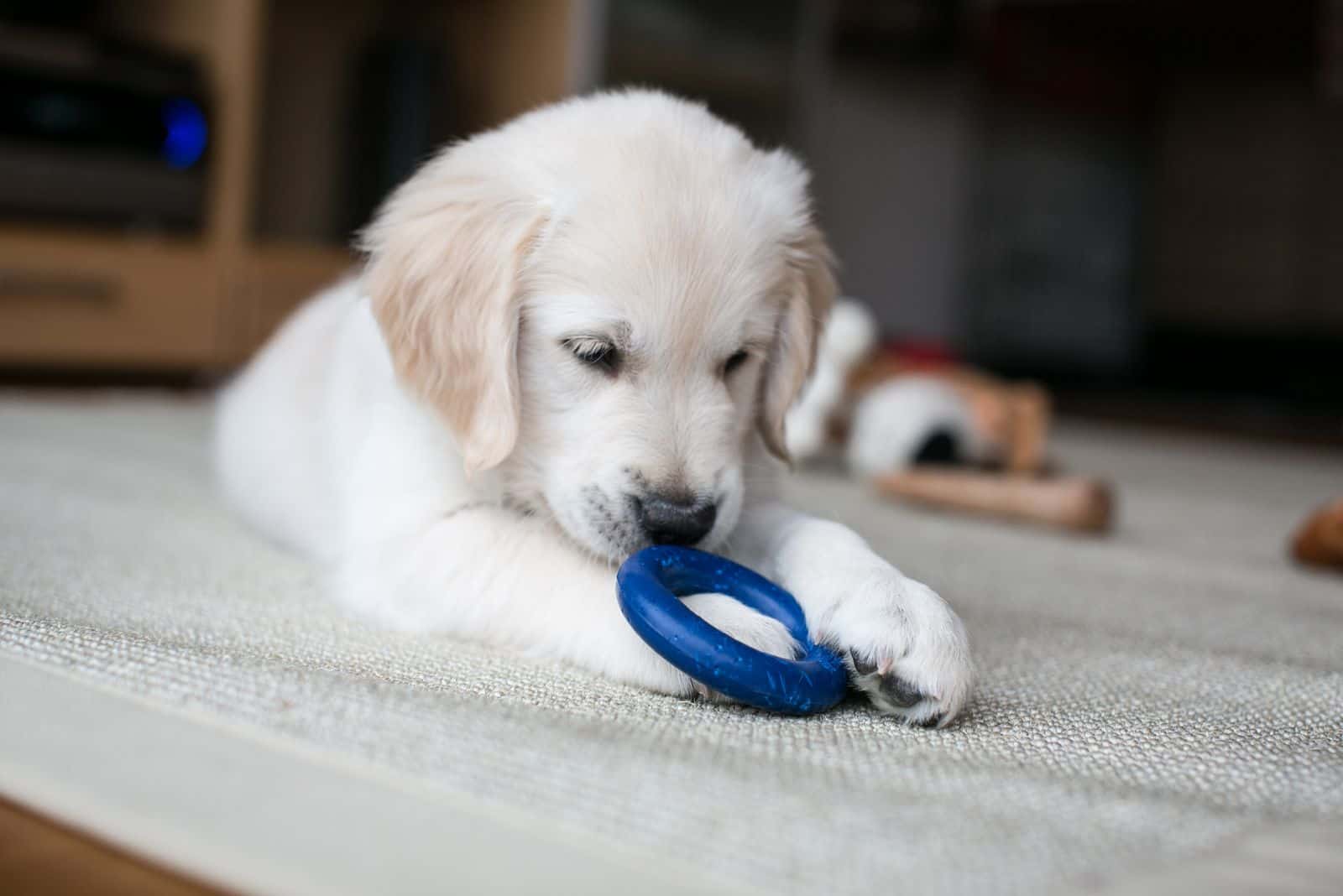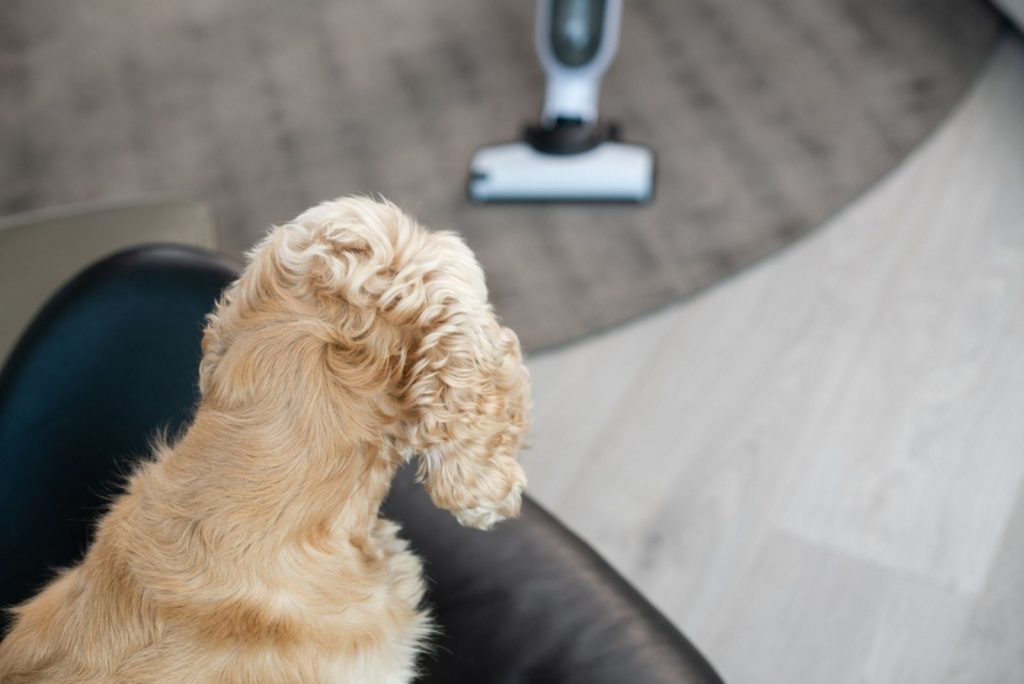
Trong số rất nhiều nỗi sợ chó, máy hút bụi có vẻ như là đặc biệt nhất. Tuy nhiên, có một lý do khá tốt và hợp lệ đằng sau nỗi sợ hãi nói trên.
Cụ thể, tiếng ồn là nguồn gốc lớn nhất của nỗi ám ảnh đó. Chó nghe tốt hơn con người rất nhiều và âm thanh mà chân không tạo ra sau đó to hơn nhiều so với chúng ta.
Người ta chỉ có thể tưởng tượng điều đó đau đớn như thế nào đối với họ khi nó nghe có vẻ ồn ào với chúng ta.
Ngoài ra, đó là lực hút được thêm vào mà thiết bị làm khiến họ sợ hãi, và sự pha trộn của cả hai tạo ra nỗi sợ hãi nói trên, khiến họ sủa vào nó trong khi lùi lại khỏi nó.
Tuy nhiên, điều này có thể gây ra vấn đề khi bạn đang cố gắng dọn dẹp nhà cửa bằng một bên trong.
Bạn không muốn làm của bạn sợ hãi mà không có lý do, nhưng bạn cần phải dọn dẹp nhà cửa mọi lúc mọi nơi, vậy có thể làm gì với nó?
Khá nhiều thứ, trên thực tế, mỗi thứ khá đơn giản, nhưng bạn càng bắt đầu sớm, của bạn sẽ càng dễ dàng điều chỉnh.
1. Đưa anh ấy ra khỏi phòng khi bạn đang hút bụi

The simplest thing that you can do is to vacuum one room at a time and make sure that the dog isn’t present in said room.
Not seeing the vacuum at work and having the noise muffled behind a closed door will make it a lot less likely for him to get scared.
This is especially true if you bring some of his favorite toys over to distract him from the alien noise he’ll be hearing from the other room.
2. Desensitize Him To The Sounds Of The Vacuum At An Early Age
While the early age isn’t mandatory and can be done at any life stage, it certainly does make the process easier and quicker.
This is a multi-step process still and should be done slowly.
Skipping ahead too quickly will only make you start all over again if your dog suddenly seems uncomfortable around the vacuum again.
Use The Vacuum At Its Lowest Setting Around Your Pooch
The first step is to start him off with the mildest of settings that your vacuum will allow and not moving the contraption around too much.
This will help your dog get familiar with the noise it makes at a more acceptable volume that won’t scare the fur off him.
It’s also good to use it as far away from the dog as possible to make said noise as quiet as it could be.
Gradually, you’ll be moving it closer to him, but only to the distance where he seems comfortable with it.
Give Him Treats If He’s Progressing
If it seems like he’s receptive to the training, make sure to provide him with some treats, ones that he likes the most.
After all, this is a relatively big fear you’re trying to make him get over, so it only stands to reason that the best treats will have the best effect.
Gradually Increase The Power Of The Vacuum In Defined Increments

As you repeat the process, you’ll see your dog get more comfortable with the vacuum at the presented volume and working capacity.
Once he seems indifferent to the sound of it, gradually increase the power, then get him used to that level, repeating until he’s fine with it functioning at full capacity.
When that step is finished, your dog should be completely fine with you vacuuming around him, so long as you don’t make any unnecessarily sudden movements with it, which is a given.
Repeat This Process With Every New Vacuum
In case the old one breaks down and you need to get a new one that’s a different model, you may see your dog be anxious and frightened around it again.
This is all part of the standard process as the new model likely has a different shape and sound to it.
Some may even have an entirely different scent to them which can be equally off-putting for your furry friend.
If your dog ends up being frightened of your new vacuum, then you’ll have to do the process all over again.
While it’s not tedious, it is mandatory if you want to use it in his presence.
What Are Some Of The Most Common Signs That My Dog Is Afraid Of The Vacuum Cleaner?
While fear is usually a pretty expressive emotion, there are a number of hints that allude to a fearful expression, some more obvious, some less so.
Here are some of the more common ones in dogs:
- Stiff expression, both in body and face
- Ears raised up on alert
- Tail between his legs
- Lowering himself down as if ready to pounce
- Shaking
- Licking his lips
- Raising his paw toward the source of the fear
- A focused expression with a furrowed brow
- Alternatively, he’s averting his gaze from the source of the fear
- Mouth is shut tight
- He’s barking directly at the vacuum in a tone that would suggest a whine
- He’s actively trying to move away from it
- He ends up going #1 or #2 due to prolonged exposure to the source of the fear
- He simply freezes in place
- He starts pacing about anxiously or doing other similar activities.
Should you spot these signs in any combination while the vacuum is turned on, know that the cause of it is more than likely it and that you should stop it before more problems occur.
In Conclusion
Dogs, while mostly brave, are still afraid of certain things. One such constant is the vacuum cleaner.
Chắc chắn, một số ít ác cảm với nó hơn những con khác, nhưng thực tế của vấn đề là đó là một nỗi sợ hãi dai dẳng trên tất cả các giống chó.
Ban đầu nó có thể đặt ra một thách thức cho bạn, nhưng nó tương đối dễ dàng để vượt qua, chỉ cần đảm bảo từ từ làm việc với doggo của bạn để vượt qua nó.
Bạn càng bắt đầu sớm, bé càng dễ dàng hiểu và vượt qua vấn đề trước mắt, mặc dù điều này có thể được thực hiện ở mọi lứa tuổi.
Tôi hy vọng rằng những lời khuyên này sẽ giúp bạn và chú chó của bạn vượt qua vấn đề cụ thể này.
Cho đến lần sau, cha mẹ thú cưng.
ĐỌC TIẾP: 3 lý do gây sốc khiến chó sợ sấm sét